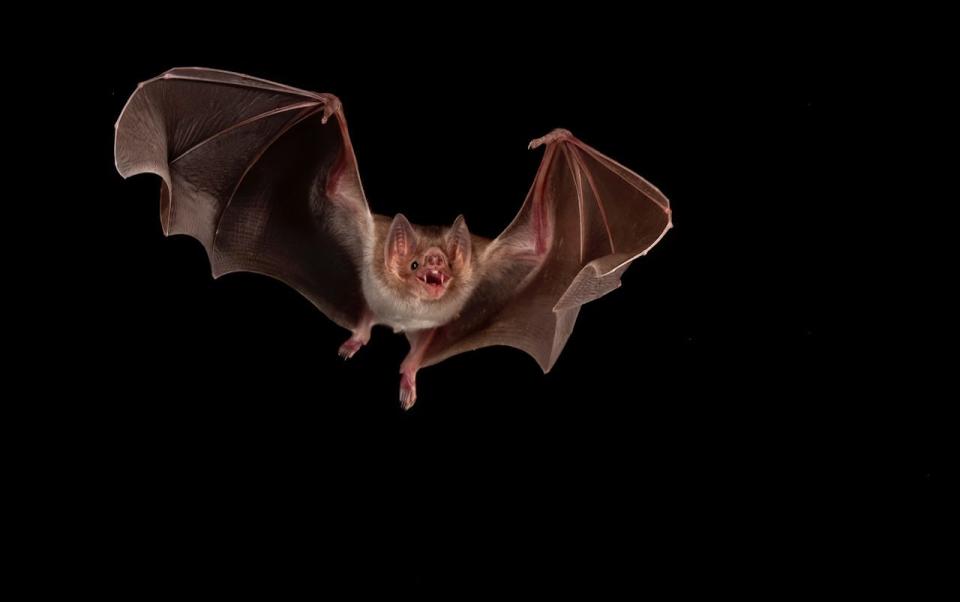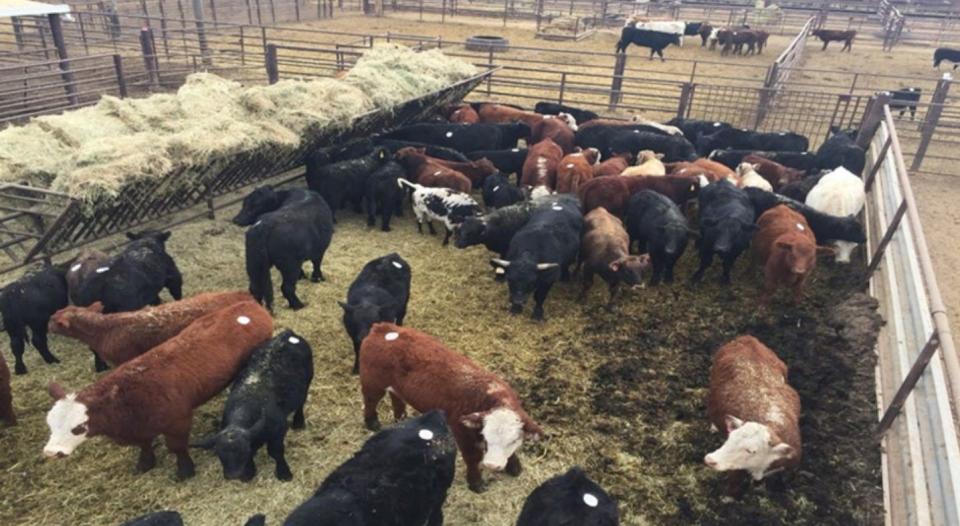Are vampire bats swarming to Florida? New study says climate change is pushing them north
Are climate change and hotter temperatures going to result in blood-drinking vampire bats swarming across Florida?
Possibly someday, according to a new study published in the journal Ecography last month. But not for a while and not very quickly, and you should worry more about livestock and rabies than open windows and midnight visits from Transylvanian counts.
Vampire bats are native to Latin America and require regular temperatures between 69 and 82 degrees for a comfortable habitat, the study said. But if winter temperatures in the United States continue to rise those bats may spread north. That's already happening in Mexico, and vampire bats have been spotted within 31 miles of the Texas border in the last five years with one recorded in "extreme southwest Texas" according to the U.S. Geological Survey.
"Modeling results suggest natural range expansion into Texas or south Florida and possibly Arizona and Louisiana may occur," the U.S. Department of Agriculture said in its 2023-2027 rabies management report released in September.
Here's what you need to know.
Wait, there are really vampire bats?
Of the over 1,400 species of bats in the world, there are three that feed exclusively on blood from other animals. The White-winged Vampire Bat (Diaemus young) and the Hairy-legged Vampire Bat (Diphylla ecaudata) are less common and feed mainly on the blood of birds. No problem there, unless you're a bird.
But Desmodus rotundus, the common vampire bat, is the most abundant and feeds off mammals, mostly domestic livestock but also horses, wild animals and birds. They don't target humans but in rare cases, vampire bats have bitten humans when they were cornered or felt threatened.
Vampire bats are small mammals, weighing less than two ounces, with wingspans of 12-15 inches, according to Texas Tech University.
Same bat time: They eat insects, pollinate plants. So why do we get freaked out by bats?
Do vampire bats suck blood?
No. Vampire bats use what the Smithsonian Channel called "the sharpest teeth in the animal kingdom" to make a small incision in their victim's skin, usually a large animal. They then lap up the blood that comes out — about a teaspoon or two — with their tongues.
"Thanks to a local anesthetic in the bat's spit, the victim doesn't feel a thing," the Smithsonian Channel said.
Are vampire bats dangerous?
Yes, because they can spread rabies and infect livestock, and that's a real concern.
Some areas of Mexico have seen up to 20% of their unvaccinated cattle die from rabies virus variants (RVV), according to the USDA, costing the Mexican livestock industry over $46.7 million per year, according to a 2020 USDA report. Vampire bats also damage cattle by piercing their hides and causing weight loss and decreased milk production.
When will vampire bats appear in Florida?

According to the new study, which mapped out the 20 northern-most appearances and 118 years of temperature changes to project how long it would take for the creatures to move into the U.S., the researchers anticipate vampire bat invasion into the southern U.S. within the next five to 20 years.
Have vampire bats been seen in Florida?
Yes, from about 5,000 to 120,000 years ago.
Fossils of a species of vampire bat 15-20% larger than the ones we're talking about, known as Desmodus stocki or Stock's Vampire Bat, were reported in Alachua and Marion counties in 1958. According to the Florida Museum, they hearken from the late Pleistocene to Holocene epochs, came up from Mexico, and probably fed on ground sloths. Fossils of them have been found in California, Texas, Arizona, Virginia, and, yes, Florida, among other places.
Have vampire bats been seen in Florida recently?

Not yet, and the government has been looking. Since 2016, the U.S. Department of Agriculture’s National Rabies Management Program has been surveying cattle at livestock sales, dairy farms, feedlots and ranches in Arizona, New Mexico, Texas and Florida for evidence of bite wounds in anticipation of vampire bat invasion. Over 500,000 have been inspected so far, and no bites have been found.
In 2021, the USDA met with 52 agencies and organizations, including the Florida Department of Health and the Florida Fish and Wildlife Conservation Commission, to discuss the coming problem and devise a plan to reduce the dangers of rabies without demonizing the bats.
At the time, the FWC wasn't too concerned. “Vampire bats are not strong flyers,” an FWC spokesperson told WUSF in an email. “So, it is also unlikely they would be able to migrate from Mexico to Cuba and then from Cuba to Florida because of the distances they would have to fly over water to do that."
The program also educates ranchers, livestock owners and cattlemen on what to look for and how to report it. Ranchers in Mexico vaccinate their cattle against rabies and work to control localized outbreaks. The UASDAS even has a Vampire Bat Rabies Calculator to help cattle owners determine if vaccinating their herd is cost-effective.
If I see a vampire bat in Florida, can I kill it?
No. It is illegal to kill bats in Florida, in accordance with Florida Administrative Code rule 68A-4.001 General Prohibitions, or use pesticides or poisons to harm, kill or even deter bats.
If you think you have a bat or bat colony of any species roosting in your home or other structure, visit the bats in buildings website for tips on what to do next. But if it's bat maternity season, you're out of luck. Bats are not to be disturbed between April 15 to Aug. 14.
To the bat 'cave': Fall is right time to rid your Florida home of bats. But there are rules
Do any Florida bats carry rabies?
Any mammal can carry rabies and bats are notorious for it. Bats are the leading cause of rabies deaths in people in the U.S., according to the Centers for Disease Control.
But in Florida, you're more likely to get rabies from a fox or raccoon than a bat, according to the FWC.
What do you do if you are bitten by a bat?
If you are bitten by a bat, or infectious material such as saliva or brain material from a bat gets into your eyes, nose, mouth, or a wound, wash the affected area thoroughly with soap and water and get medical advice immediately.
If possible and if it can be done safely, the bat should be captured and sent to the county health department for rabies testing. You can't get rabies from having contact with bat guano (feces), blood, or urine or from touching a bat on its fur but avoid any more bites.
Contributors: Cheryl McCloud, USA TODAY NETWORK Florida; James Powell, Emily DeLetter, USA TODAY
This article originally appeared on The Daytona Beach News-Journal: Vampire bats in Florida? Rabies a danger from future invasive species

